On the Road is a weekday feature spotlighting reader photo submissions.
From the exotic to the familiar, whether you’re traveling or in your own backyard, we would love to see the world through your eyes.
It’s Albatrossity Monday! We head to a state park in TN with Kosh III on Tuesday, and ema gives us dogs (dogs!) for a mid-week treat. Then Dagaetch takes us to Israel on Thursday and to Canada on Friday. Should be a fun week.
We are caught up on our backlog, so this is a great time to send in your pics!
Albatrossity
Afternoon and evening of our first full day in the crater, with more mammals, more birds, and an African sunset from the crater rim.
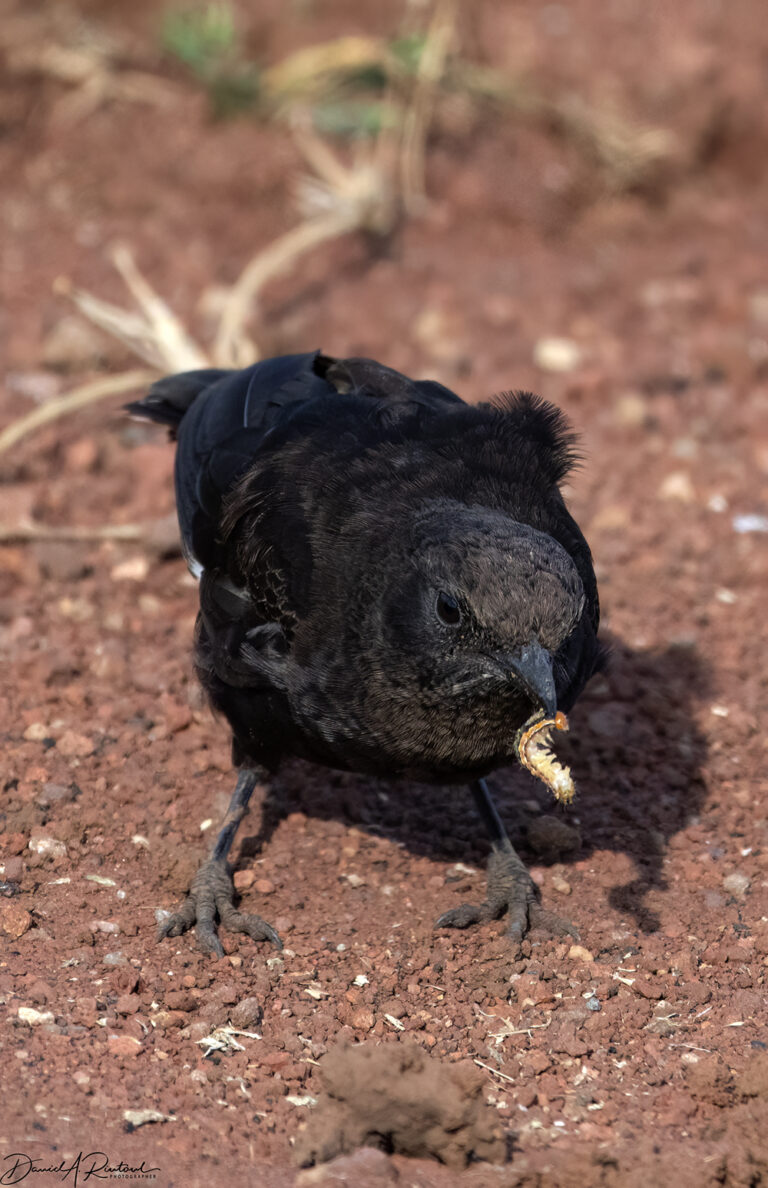
One of the more intriguingly-named birds we saw on this day (and only on this day, it turns out), was the Northern Anteater-chat (Myrmecocichla aethiops). Chats (Saxicolinae) are a large subfamily of the Old World flycatcher family (Muscicapidae), and are generally ground-feeding insectivores. They are not related to the Yellow-breasted Chat that is familiar to North American birdwatchers; in fact, the relationship of that bird to any particular lineage is still quite unclear. The anteater part of the name apparently comes from their fondness for ants and termites (they even nest in burrows that they excavate in termite mounds), but this one had found a tasty caterpillar for lunch. Click here for larger image.
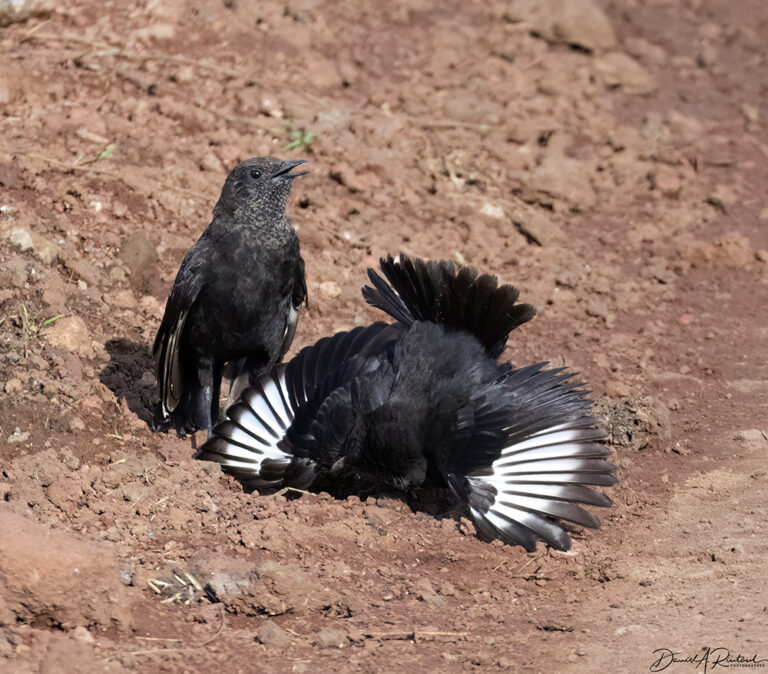
And these two were engaged in some kind of theatrics that even our guide said he had not seen before. It was too early for them to be courting, but since they are monogamous and maintain the pair bond year-round, perhaps this was some kind of pair-bond maintenance display. Other bird species with long-lasting monogamous breeding systems are certainly known to engage in such displays, which can be as complex as the handshake rituals perfected by professional athletes. Click here for larger image.
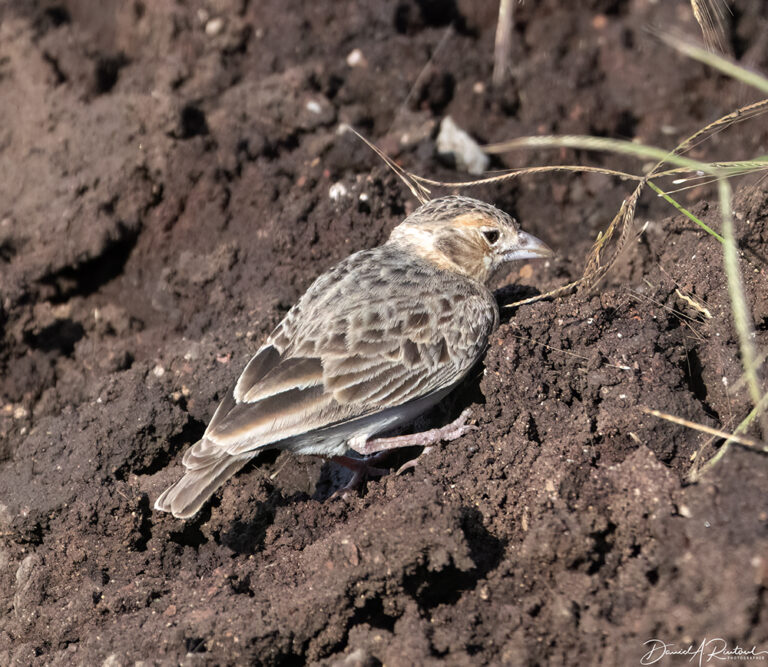
Another bird with a hyphenated and ambiguous name was also seen frequently that afternoon, and several times later in the trip. This is a female Fischer’s Sparrow-Lark (Eremopterix leucopareia). It is not a sparrow, but is currently classified as a lark (family Alaudidae), despite that rather massive conical sparrow-like bill. Like the Anteater-Chats above, it seemed to prefer bare ground and roadside habitat. Click here for larger image.
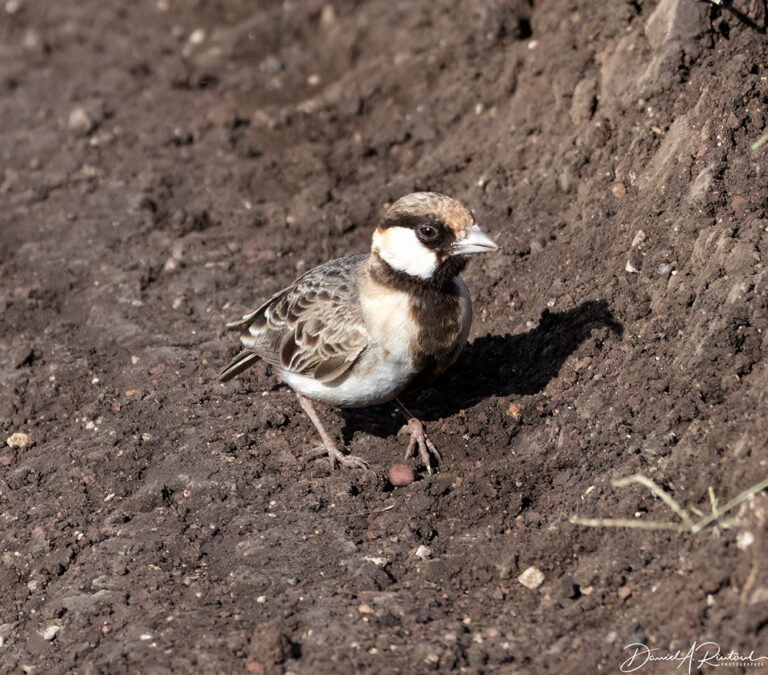
And this is a male Fischer’s Sparrow-Lark, a not very colorful but still striking bird somewhat reminiscent of the House Sparrows that are familiar to North American birdwatchers. The bird’s name commemorates a German physician and explorer, Gustav Fischer, who died at a young age from a fever that he contracted in Africa. That old-time explorer gig did have its hazards… Click here for larger image.
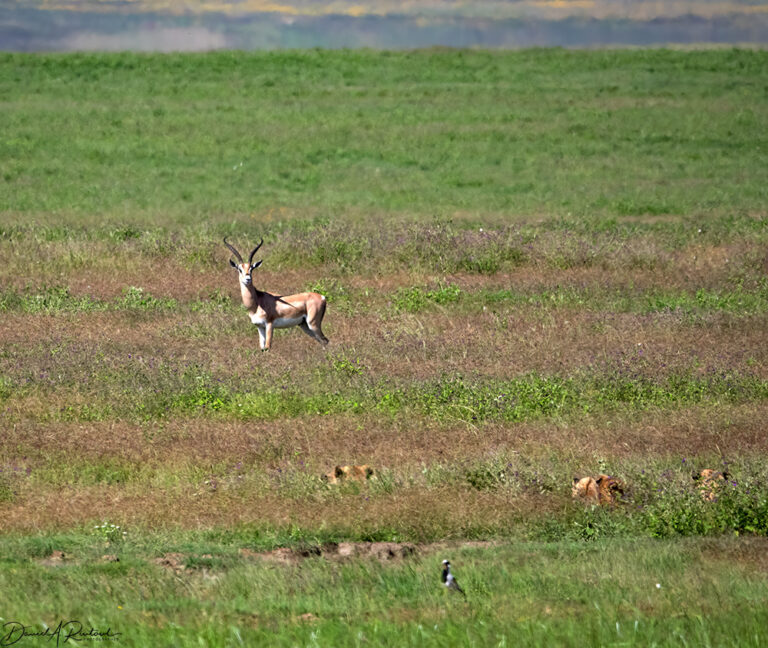
We also spent a considerable amount of time (and I have many millions of pixels to prove it!) watching some lions (Panthera leo) who were hunkered down in the tall grass. You can see some of them in this picture, and they have also attracted the gaze of a passing gazelle. There were at least a dozen lions in that pride. The lions seen here are cubs, and the gazelle seems to have figured out that there is no imminent threat, but it is maintaining a respectful distance nonetheless. And if you have a good memory, you will recognize that bird in the foreground as a Blacksmith Lapwing/Blacksmith Plover. Click here for larger image.
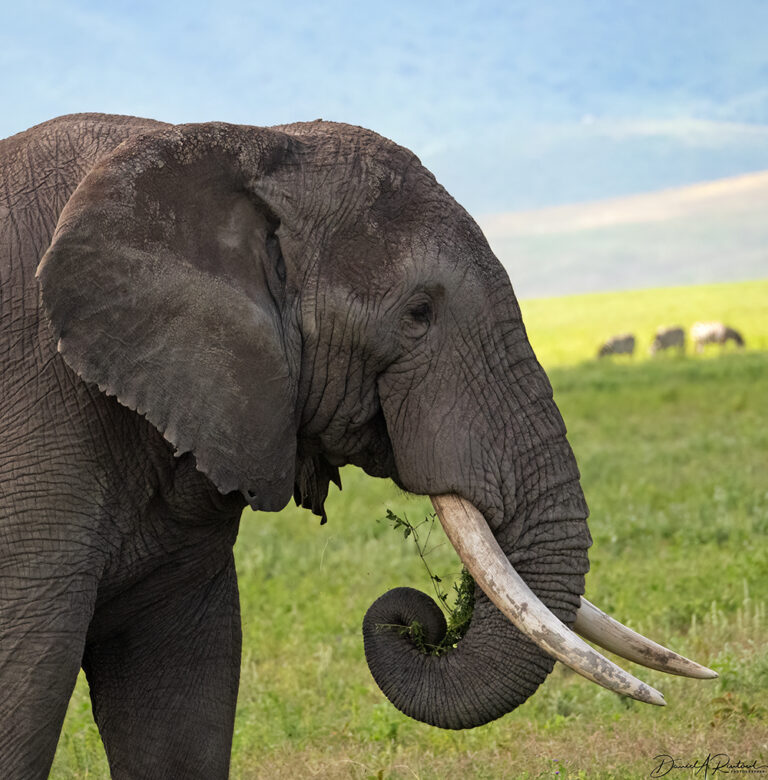
Elephants (Loxodonta africana) have a lot of mass to maintain, and they were always eating, even as they seem to just be strolling across the crater floor. I don’t know what an elephant’s BMI might be, but I do know that it is impressive that it all comes from a vegetarian diet! Click here for larger image.
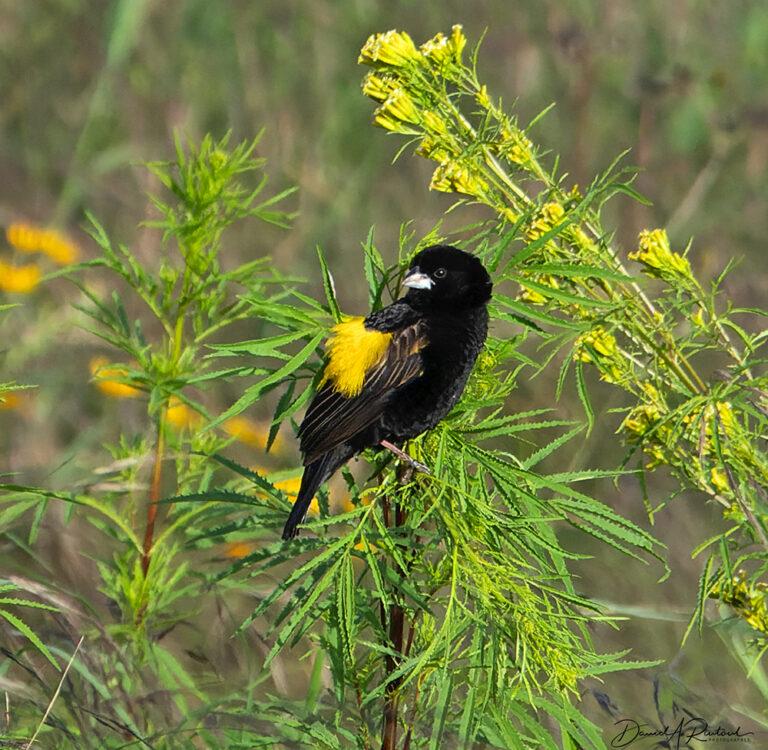
On our way back to the lodge late in the afternoon, we spotted this striking species, a Yellow Bishop (Euplectes capensis). I am unable to find out where the group name “bishop” comes from, but perhaps the fancy vestments reminded somebody of a clerical costume. At any rate, recent molecular data indicate that it is not closely related to the other bishops, but more closely related to the widowbirds (another class of birds with a name that seems mysterious). Click here for larger image.
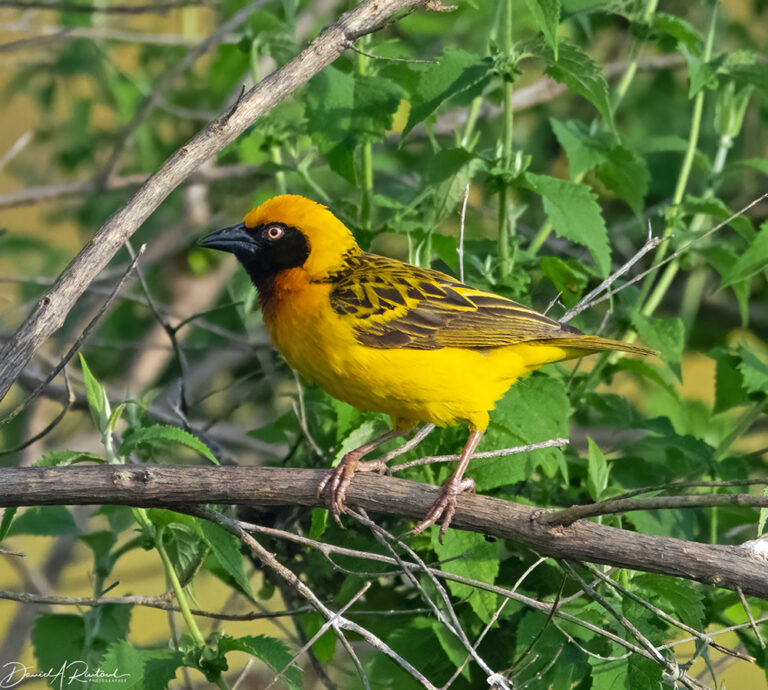
Another relative of the bishop, the Speke’s Weaver (Ploceus spekei), is one of the birds that hard-core listers go to the crater to add it to their life list. They are found elsewhere in East Africa, but are abundant in the crater. We found a busy colony of these birds, weaving nests and hanging upside-down, along the road back to the lodge. Click here for larger image.
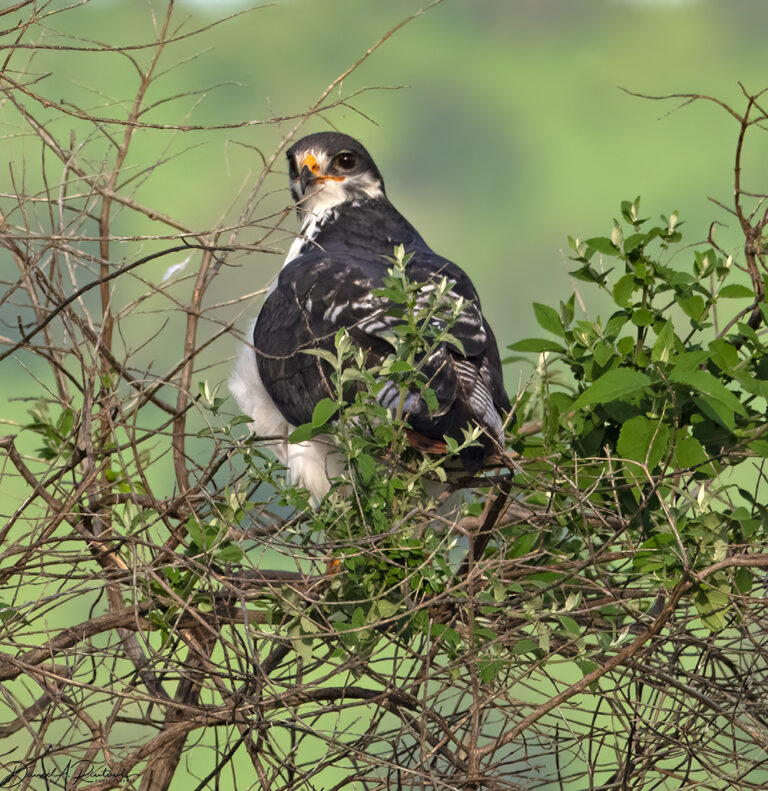
And we were not the only ones interested in the weaver nests. This Augur Buzzard (Buteo augur) was methodically pulling apart a nest to see if there were any tasty morsels inside. Click here for larger image.

At the end of the day we got to the lodge, had a good dinner and a nice beer; there are some advantages to visiting a part of the world that was in German hands for a while. Then we toddled back to our lodgings for the night. This sunset view over the crater rim was dessert. Click here for larger image.

eclare
I know you said those lions were cubs, so no danger, but if I were that gazelle I’d get the hell out of there!
The sunset photo is gorgeous. When I was in Kenya I loved looking at the night sky and seeing so many stars. You don’t realize (or I didn’t) how many are missing due to light pollution til you go to a place that has none.
JPL
Love the photos, but the birds look angry.
Baud
@JPL:
They’re auditioning for the game.
Amir Khalid
@eclare:
I agree. Where there’s lion cubs, there’s mama lions close by.
eclare
@Amir Khalid: Yep! How is Scully?
Amir Khalid
@eclare:
She’s doing great! I think we’re bondiing well.
eclare
@Amir Khalid: Yay! 😺
JeanneT
The bird pics are lovely as usual, but the elephant profile shot made me catch my breath. The contrast of the grey curve and the landscape color, the detailed skin and tusk texture, the expression: so fine!
Albatrossity
@Amir Khalid: Oh, yeah, there were fully-grown lions in that group as well. They seemed to be sleeping off a big meal from the night before, and only rarely raised their heads enough so that we could see them. The cubs were the only ones showing any interest in the other passing critters.
SteveinPHX
Thank you again.
Terrific portrait of elephant!
WaterGirl
@Amir Khalid: But where are the photos of Scully? I have one more regular ask in me before I result to begging and pleading. :-)
WaterGirl
The elephant!
mvr
Enjoying that sunset.
Thanks!
StringOnAStick
Gorgeous!
BigJimSlade
Elephants = roving fertilizer machines, lol.
In that first picture, the bird kinda looks like it’s wearing mom’s or dad’s shoes and has to grow into them.
Yutsano
HUFFALUMP! Man it never ceases to amaze me how creative deoxyribonucleic acid can get.